When the company reintroduced its 90-degree motherboard mounting design last summer with the Raven RV02 chassis, we noted that it combined a mainstream product design with triple 180mm intake fans for the demands of enthusiast-grade airflow performance. After all, the properties of thermodynamics naturally insist that heat rises, leading SilverStone to construct an airflow layout where hot exhaust can be pushed out the top of the chassis. With the combination of a solidly built exterior and adequate mounting room for the most demanding multi-GPU hardware configurations at the time, we remained confident that the Raven RV02 provided all the amenities that any enthuasist consumer could want without holding back on unique aesthetic qualities to appeal to the mainstream market.
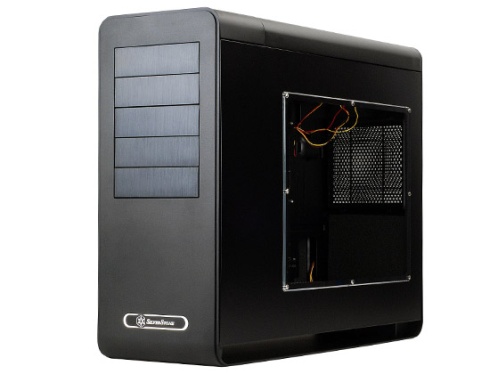
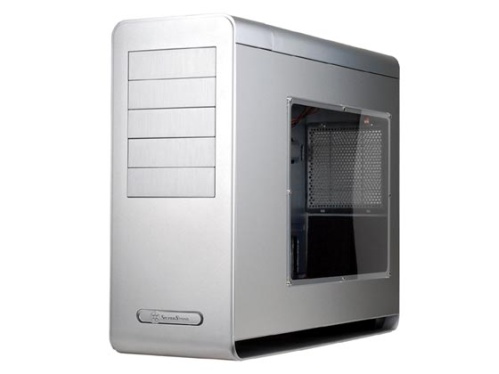
In December 2009, the company announced the Fortress FT02 chassis, a work of art and aesthetics combining two of SilverStone’s most distinctive computer chassis breakthroughs – the unibody construction of the Temjin TJ07 introduced in 2005, and the 90-degree rotated motherboard design of the Raven RV01 from 2008. But unlike the Raven series, the company’s engineers have now gone back to the drawing board and meticulously crafted a chassis with the vertical cooling layout of the Raven chassis and several notable design improvements, including a hot-swappable hard drive cage and an acoustically padded interior for maximum versatility. All in all, we have decided to test whether or not the Fortress FT02 is the company’s latest advancement towards a more streamlined, high-end aluminium chassis construction with better thermodynamic performance than its cousin and predecessor, the Raven RV02 and Fortress FT01.
Unboxing, Packaging and Specifications
When our black Fortress FT02 with side panel window (SST-FT02B-W) arrived, it was encased in a typical rectangular “case box” almost identical to that of the Fortress FT01. The marketing details gave us an accurate description of what to expect inside, accompanied by a standard image of the white version of the chassis. The green “FORTRESS” font design at the top left of the box emphasizes a bold distinction between the Fortress series and the Raven series that features a white Halloween-themed font on the Raven RV02 box. Superficialities aside, the case came wrapped in a nylon fabric sandwiched between two large Styrofoam placeholders, making for an ample amount of shipping security while being transported via DHL from SilverStone’s US distribution warehouse in Chino, California.
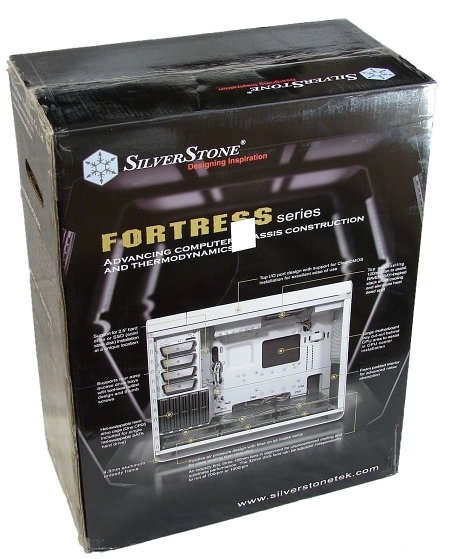
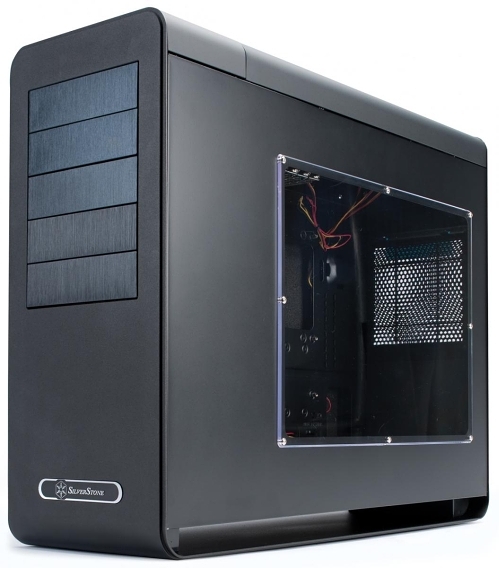
After unpacking, the chassis itself appeared untouched and in perfect mint condition – not a dent, scratch or smudge to be seen. Just like the Fortress FT01 before it and the Raven RV02, the package also came with a product manual, an assortment of screws, fan adapters, fan power adapters and hard drive mounting accessories.

In particular, the SilverStone Fortress FT02 (SST-FT02B-W) features a total size of 212mm (W) x 497mm (H) x 616mm (D). In contrast, the Fortress FT01 (SST-FT01B-W) came in at a slightly smaller 211mm (W) x 496mm (H) x 494.5mm (D). The most noticeable difference between the two chasses lies with the depth increase on the newer revision, but these unusual dimensions prove to be useful for multi-GPU setups as we will mention shortly.
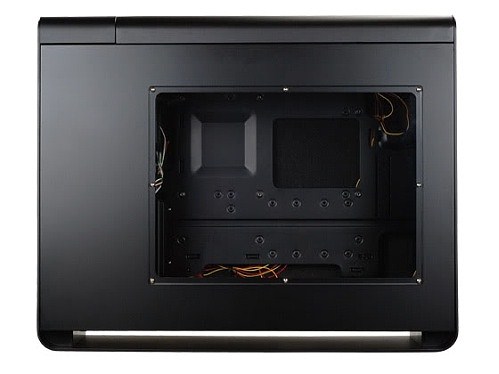
SilverStone Fortress SST-FT02B-W black with window side panel
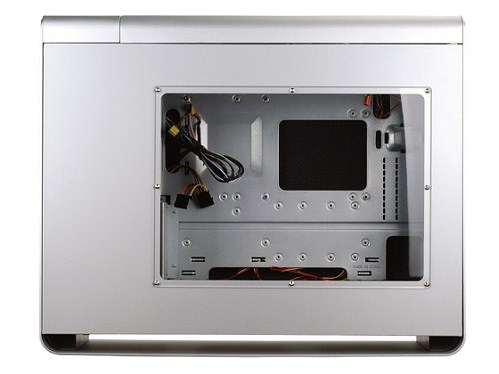
SilverStone Fortress SST-FT02S-W silver with window side panel
Here are the general specifications of the Fortress FT02:
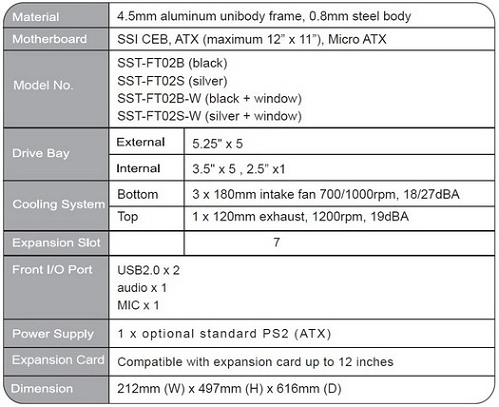
In comparison, the Raven RV02 (SST-RV01B-W) measures in at 212mm (W) x 503mm (H) x 643mm (D) while the Raven RV01 (SST-RV02B-W) comes in at a much larger 280mm (W) x 616mm (H) x 660mm (D).SilverStone Raven RV02 for comparison:
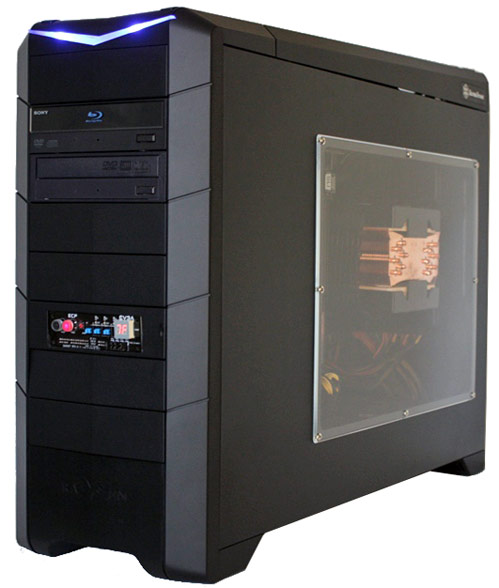
Exterior Design and Aesthetic Qualities
Just like its predecessor, the frame of the Fortress FT02 is constructed out of a single piece of aluminum. More specifically, the FT02 features an elegant U-shaped unibody frame that not only provides unique styling, but also functional purpose. It gives the chassis a design trait reminiscent of Apple’s Power Mac G5, with the exception of the two carrying handles and the front mesh panel. In this respect, the FT02 is an example of elegance through simplicity, offering a smooth aesthetic exterior that can only be fully understood by an Apple product designer. An added benefit of its aluminum construction is the added strength – the Fortress FT02 will not bend or flex when handled, assembled or transported. SilverStone’s expert product designers intended this particular this chassis to provide a sublime effect to its owner – no unnecessary complexity or sharp edges – just a smooth, streamlined, rock solid enclosure with subtle curves and ample space to house some powerful hardware within.
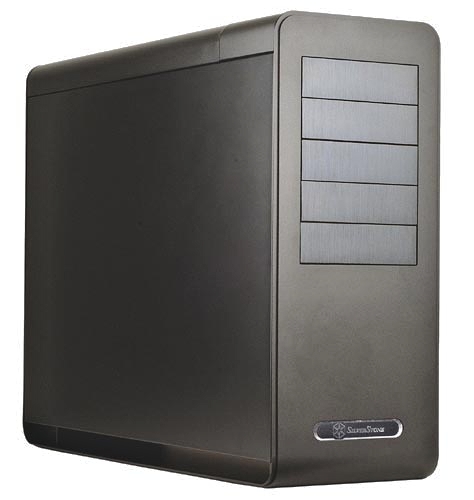
Like the Raven RV02, the top of the Fortress FT02 has a removable mesh top. But in contrast, the newer top is much sturdier and reinforced with a firmer snap-on design that becomes evident when detached from the rest of the aluminum body. The mesh top also lacks those unnecessary sharp edges found on the one included with the RV02. SilverStone’s engineers have also placed more emphasis on airflow ventilation with the FT02 design as it appears to have more honeycomb-shaped ventilation holes than the RV02. As a ventilation bonus, it also lacks the unnecessary T-shaped aesthetic support beam down the middle of its mesh design.
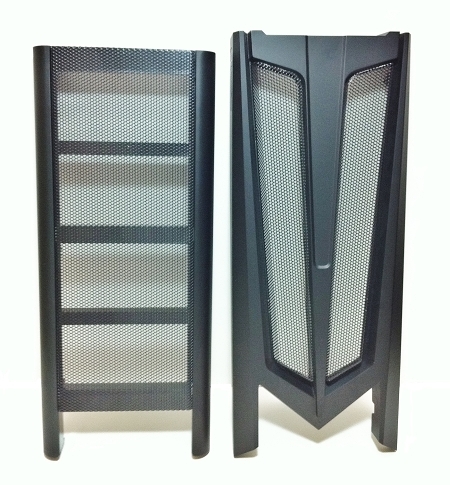
Meshed top panel designs on the Fortress FT02 and Raven RV02
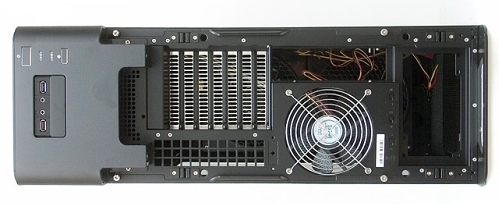
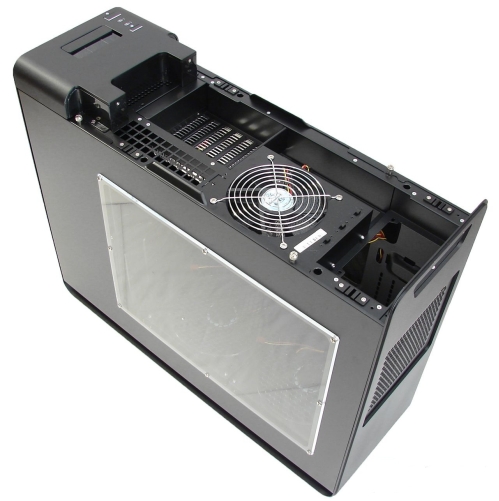
For what it’s worth, SilverStone's new design places 90-degree airflow ventilation as a top priority in its second-generation Fortress case. Based on our prior experience with the Raven RV02, one of the greatest benefits of an ATX motherboard rotated 90-degrees is that its I/O port connectors can be hidden directly under the mesh top, out of sight and free from clutter. The cables can then be easily organized and routed out the back of the chassis in a single bundle. With the addition of a few cable ties, they can go virtually unnoticeable.
At the top-front region of the aluminum body are the Power and Reset buttons, complete with integrated LED’s for determining power and hard drive activity. SilverStone has also implemented a new sliding shell panel alongside these buttons to reveal additional I/O connections integrated into the chassis. These include two well-spaced USB 2.0 ports and the customary 3.5mm headphone and microphone jacks with motherboard connections for both AC97 and HD Audio. Yet, it appears that the company has decided to ditch the IEEE 1394 FireWire connector present on the Fortress FT01. Even so, we are surprised that the engineers did not include room for an eSATA port, particularly in the interest of many new hot-swappable storage devices releasing to market with the standard.
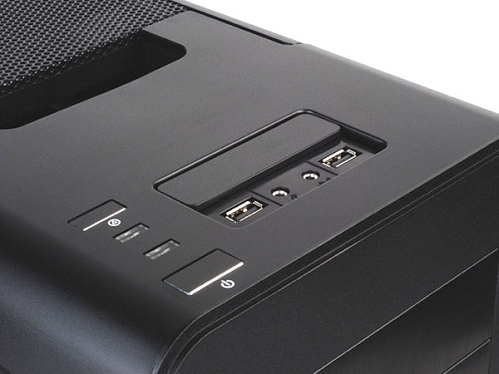
Another important design aspect of the aluminum body is the clearance area between the very bottom of the chassis and the bottom of its three internal fans. This 1-inch clearance zone not only serves as a valuable design aesthetic to the overall contours of the chassis – it also allows the chassis to be placed on carpet, for instance, without blocking positive airflow to the internal fans. Moreover, this thin sheet of curved aluminum gives the impression that the body of the case is “floating” on a magic carpet, or even rolling on a conveyor belt. The entire curved unibody sheet of aluminum molded around the rectangular chassis serves to define a sense of strength and durability for a design that would otherwise have sharp edges and a boring appeal.
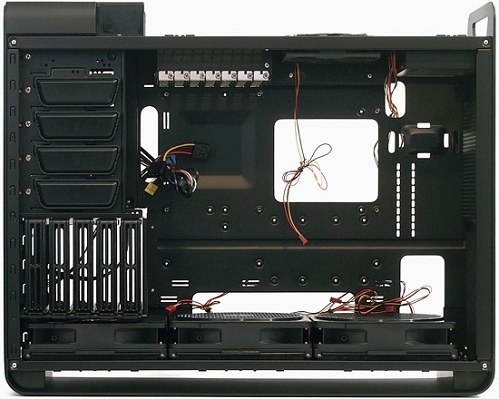
Positive Airflow Design and Cooling Performance
For years, SilverStone has strived to deliver uncompromised airflow performance value for its enthusiast customers. With a history in building full-size, all-aluminum tower cases dating back to 1999, we fully expect the company’s R&D team to have refined its manufacturing process and thermal design concept to improve cooling while keeping fan noise to a minimum.
Many performance-oriented chassis manufacturers usually equip their designs with several different types of case fans, each of which holds its own respective purpose for either exhaust or intake. As SilverStone explains, when the combined airflow of intake fans is greater than the combined airflow of exhaust fans, a positive pressure is created inside the chassis. Conversely, when the combined airflow of exhaust fans is greater than the combined airflow of intake fans, a negative pressure is created. The first two SilverStone chasses to incorporate this airflow methodology were the Sugo SG03 in 2007 and the Fortress FT01 in 2008. They have optimized support for high-end GPUs and filters to prevent dust build-up for longer service life.

SilverStone's positive airflow diagram
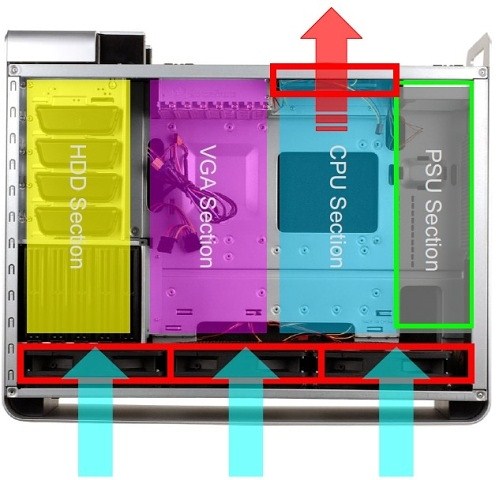
Fortress FT02 airflow pathways and ventilation shaft
The interior contours of the Fortress FT02, in combination with its dedicated vents, fans and pathways are exclusively designed to maximize positive airflow inside the chassis. Like the Raven RV02, it features three SilverStone FN181 180mm sleeve bearing fans that operate at 12V and are advertised with up to 100CFM airflow at just 18dBa. In terms of actual air pressure and noise levels, however, the FT02 includes three fan switches right under its top mesh to toggle between “High” and “Low” settings. In particular, the fan speeds can be toggled between 700RPM and 1000RPM and are generally useful for those wishing to maximize airflow where ambient heat dissipation is needed most, while minimizing fan noise from unneeded performance zones like a hard drive bay with only a single drive. In our test usage scenario, we set the center and right fans at 1000RPM to maximize airflow to our dual-GPUs and CPU socket area, and we set the left fan at 700RPM over the hard drive bays to cool a single 3.5-inch Seagate Barracuda 7200.11 SATA II drive.
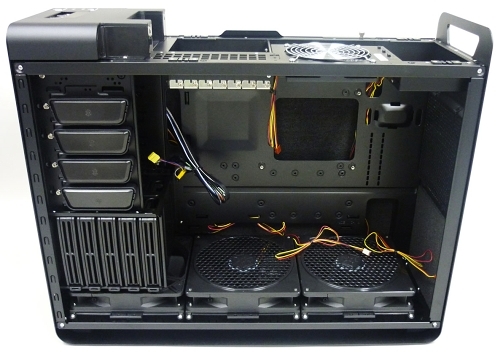
The Fortress FT02 houses three SilverStone FN181 180mm sleeve bearing fans
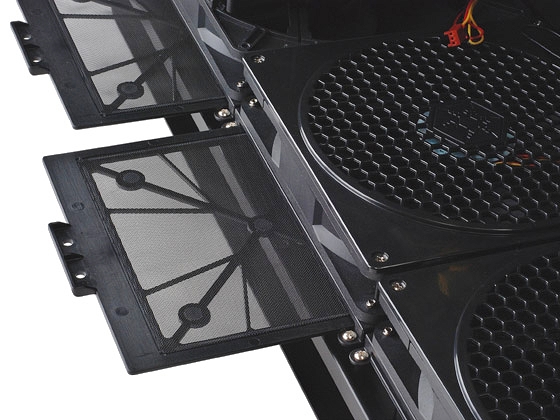
Intake airflow dust filters are essential to SilverStone's positive airflow methodology
While the Fortress FT02’s speed-adjustable fans are ideal for maximizing air intake with positive pressure and stack effect cooling, the large space they occupy at the bottom of the chassis can also be suitable for installing a large 360mm or 420mm radiator provided enough room for GPU placement.
This brings us to our next subject – GPU placement and size restrictions. When SilverStone introduced the Raven RV02 in July 2009, it emphasized that the chassis supported one extra PCI-Express expansion slot over the common seven supported for a normal ATX chassis, which allows the chassis to accommodate up to four 10.5-inch dual-slot GPUs. Shortly afterward, it released a Raven RV02 product info page with an image depicting the chassis as perfectly capable of supporting ATI’s infamously long 12.2-inch Radeon HD 5970. Little did we know, however, that the company was hiding an essential secret about fitting the card into the Raveon RV02. Upon closer inspection of the tiny image on the info sheet page, it appears that the filter on the middle fan was removed in order to accommodate an extra 0.2 inches of vertical space for ATI’s massive dual-GPU Hemlock solution.
With our heads buried in disappointment after the Raven RV02 fan situation, we decided to test whether or not our Radeon HD 5970s would fit in the Fortress FT02 (SST-FT02-B) review unit. Sure enough, SilverStone left the vertical dimensions of the PCI/PCI-Express mounting slots exactly the same length (12 inches), which did absolutely nothing to change our dilemma.

Two ATI Radeon HD 5970 graphics cards in the SilverStone Fortress FT02 chassis

ATI’s 0.2-inch red fins prevent Radeon HD 5970 clearance
After quickly skimming over the Fortress FT02 product info page, we noticed that the company also posted an image of the Radeon HD 5970 fitting perfectly inside the FT02 chassis. In perspective, it is important to keep in mind that ATI released its flagship dual-GPU card in November 2009, whereas SilverStone finalized production of the Fortress FT02 in December 2009. At this point, we are not sure whether to blame ATI for including such useless 0.2-inch red fins on the bottom of the Radeon HD 5970, or SilverStone for claiming that its second-generation Fortress would fully support the longest consumer GPU in history without any need for modifications. After speaking with SilverStone about Radeon HD 5970 installation, we were able to get our two monstrous cards installed by removing the middle 180mm fan filter. The resulting outcome is that the center fan is 0.2 inches shorter than the left and right fans, providing sufficient installation space for two Radeon HD 5970 graphics cards.
SilverStone’s Revolutionary New Fan Design
At this point in time, we're sure that SilverStone engineers are aware of the Radeon HD 5970 installation oversight and have considered a solution for enthusiast customers. Indeed, the company has not only designed a better installation solution for Radeon HD 5970 owners, it has also engineered a more efficient ambient heat extraction method at the same time.
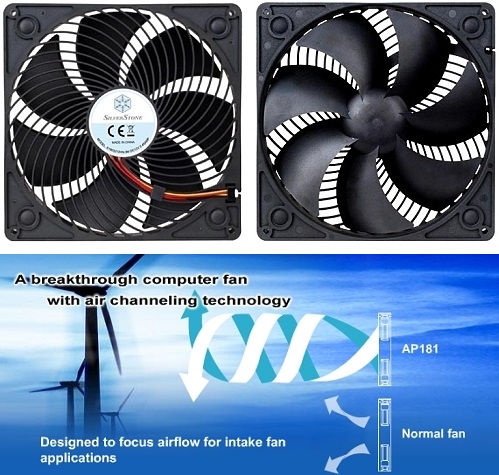
Meet the SilverStone Air Penetrator 180mm SST-AP181, a revolutionary fan so unique in design, slim form factor and unmatched efficiency that it could serve the perfect role as any intake case fan or high-density radiator solution. The company
back in May using a smoke machine to show its competitive edge over leading chassis fans in the industry. Best of all, the new fans feature up to 2.45mm H2O static air pressure opposed to 0.98mm H2O static air pressure with the FN181 fans included in the Raven RV02 and Fortress FT02.SilverStone’s new Air Penetrator SST-AP181 intake fan has been exclusively designed with the goal of focusing airflow into a spiral column that can be “channeled through various obstacles inside the modern computer case for more efficient cooling performance.” As KitGuru recently noted in their thoroughly explained SST-AP181 review, the concept and design motives are in place to ensure that the unique blades and grills on the Air Penetrator can create enough pressure to push air as far as one meter away with minimal speed and noise. SilverStone is pushing this new enthusiast-grade fan as a perfectly capable high airflow unit for supplementing high-density heatsinks and radiators.

SilverStone's Air Penetrator AP121 spiral column airflow design

Real-world
While we certainly appreciate the idea that SilverStone included three of its older FN181 fans with the Fortress FT02 in an engineering effort to maximize positive airflow, we must certainly admit that overall cooling performance strongly benefits from the improved SST-AP181 design. Meanwhile, the company also included a fourth 120mm fan resting right above the CPU socket exhaust area. This fan utilizes golf blades for exceptional quietness with emphasis on maximizing positive air pressure. In the game of golf, the dimples of a golf ball serve to reduce drag and air resistance on the ball, thereby giving a longer drive. Likewise, the golf blade design of this 120mm ceiling fan allows for a greater amount of heat to dissipate from vital components and lowers overall ambient CPU temperatures. Consequently, it is the only fan on the entire chassis that does not have a dust filter as it does not require one.
Test Setup and Installation Impressions
The hardware configuration setup for our SilverStone Fortress FT02 unit was based around Intel’s P55 platform and Nvidia’s GT200b chip design package from yesteryear. We used an EVGA P55 SLI FTW motherboard, an Intel Core i7 860 2.80GHz processor, 4GB of G.Skill RipJaws DDR3 1600MHz 7-7-7-24, an EVGA GeForce GTX 275 CO-OP PhysX Edition and an EVGA GeForce GTX 275 in SLI, and a single Seagate Barracuda 750GB 7200.11 SATA II hard drive.
In similarity to the Raven RV02, the Fortress FT02 supports large EATX motherboards up to 11-inches wide, including EVGA’s standard X58 SLI Classified models. However, it will not support the larger EVGA X58 4-way SLI Classified as it measures 13.58 inches wide, and will definitely not make room for the EVGA Classified SR-2 dual socket extra-large pizza that can’t seem to find a home anywhere it looks. While 13-inch EATX motherboards won’t fit, SilverStone notes that dual-socket SSI CEB motherboards will, as the motherboard tray has eight extra holes for boards that use bolt-through CPU coolers. It also conveniently features an access hole designed for the support plates of enthusiast-grade heatsinks.
From our experience, installing even a two-way SLI or CrossFireX configuration in this chassis is a very tight fit. Installation of the first card in PCI-E Bracket 1 is a breeze, but issues may arise when installing a second card because the 5.25-inch drive bay clearance on the Fortress FT02 is only 7.5-inches deep. At this depth, many standard Molex and SATA power connectors may come into direct contact with the heatsink of the second GPU and may prevent any DVD drives or 5.25-inch accessories from being completely inserted into their drive bays. For those GPU enthusiasts wishing to install 3-way or 2-way SLI / CrossFireX with space between the cards, this unfortunate design aspect may be a deal breaker. Nevertheless, if SilverStone had installed an eighth PCI/PCI-Express bracket in the Fortress FT02 like it did with the Raveon RV02, this issue would not have been relevant.
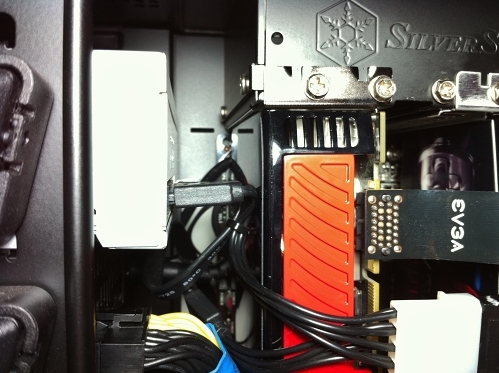
A 5.25-inch DVD drive without enough installation clearance interfering with two-way SLI
On the other hand, we were more than delighted by the ease of hard drive installation on this chassis. SilverStone’s engineering group decided to depart from the metal drive bay design that accompanies the Raven RV02 and continued with the much simpler five-drive plastic bracket system featured on the Fortress FT01 and Raven RV01. Hard drive installation does not require any screws or tools, and the drive brackets conveniently feature rubber rings to sandwich the drives in place while minimizing vibration propagated from the rest of the chassis. As a bonus, the first drive bay contains a hot-swappable SATA II connector for hard drive mobility and troubleshooting purposes. Unfortunately, the hot-swap bracket doesn’t support SAS drives, even though unified serial brackets have similar manufacturing costs on SilverStone’s end.

SilverStone Fortress FT02 drive installation bays
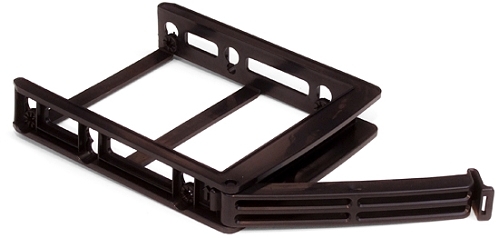
In a new design step that we have been anxiously awaiting from a chassis manufacturer, SilverStone has embedded silencing foam into the interior of the Fortress FT02 chassis for acoustic sound dampening purposes. The design win appeals mainly to acoustic diehards and audio professionals, and it allows for effective noise absorption produced by any component within the aluminium body and works conjointly with the U-shaped diaphragm of the interior.
Wire management was also very painless and straightforward when assembling our components in the Fortress FT02. Then again, that may be due in part to our expertise on the subject. SilverStone conveniently placed wiring and cable routing pathways throughout the motherboard tray and frame of the chassis. We were able to maneuver the flexible modular cables of our power supply with relative ease behind small hidden spaces and behind the motherboard tray where they would go unnoticed. However, we should note that it did take a little over ten minutes to strap the power supply into position. With smaller units, it is necessary to ensure that the power supply does not move around when being fastened into place. It took us a bit of juggling to get all the mounting parts installed, but the mounting system appears to be sturdy enough for suitable use. In comparison to installing a large SilverStone Strider ST1500 1500W power supply, our smaller unit took roughly twice as long and required two people to secure it in place.
Conclusion
After four hours of assembly, wire management and some final adjustments, the aesthetic value of our Fortress FT02 build came to meet even our most critical expectations. Not only did the unibody aluminium frame enhance its elegant exterior design over the Raven RV02, it also reminded us that enthusiast-grade hardware need not be encased in an overblown gaming chassis with egotistical embellishments. Besides, we can’t help but note the fact that the Fortress FT02 proudly received the iF (Internation Forum Design) product design award for 2010. In December 2009, a collection of international jury gathered in Hannover, Germany and judged over 2,486 products from over 39 countries to make their selections. Among all of these candidates, the forum chose to award the SilverStone Fortress FT02 with the design win. If there were any better way to express our enthusiasm about this chassis, it would be noted with the mention of this exceptional award.
Having previously reviewed the SilverStone Raven RV02 last summer, we are led to believe that the Fortress FT02, despite being a product of a different design series, is an unobtrusive aesthetic variant and an equally capable alternative. Unfortunately, both chassis designs share a host of similar issues. For instance, SilverStone had originally advertised both to fully support ATI's Radeon HD 5970 with a 12.2-inch footprint. After a lengthy course of real-world testing, we came to the conclusion that a minor 0.2-inch clearance shortage prevented our cards from being installed into the Fortress FT02 without first having to remove the middle 180mm fan grill. Another engineering oversight came up when we attempted to install a 5.25-inch DVD drive into the front bay with our two GeForce GTX 275s in SLI already in place and spaced apart. We suggest that SilverStone could have mitigated this issue by adding an eighth PCI/PCI-Express bracket for better compatibility with enthusiast-grade motherboards.
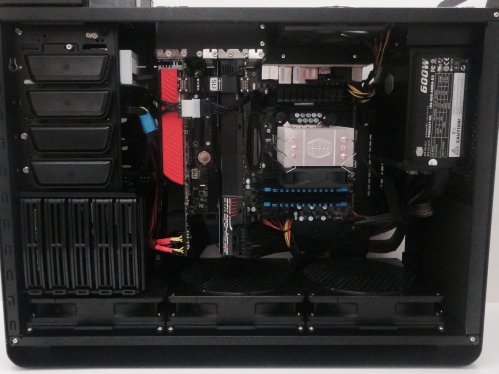
With the exception of these minimal design blemishes, SilverStone has still managed to deliver an elegant unibody aluminum chassis that never once compromises aesthetic simplicity for maximum airflow performance. SilverStone's talented R&D staff have meticulously engineered a positive airflow system that successfully prevents the accumulation of deadly dust bunnies, while lowering ambient temperatures and maximizing system health. They have also provided an upgrade path to a much more efficient 180mm airflow fan system that we highly recommend for this chassis. The Fortress FT02 is the fusion of many years of professional consumer research experience and innovation that strives to deliver a unique high-performance design with functional purpose.



